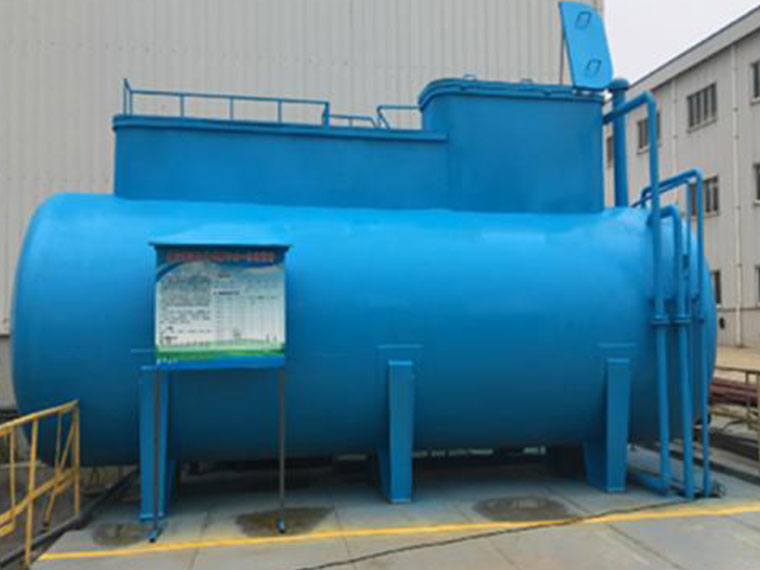Product Details
Landfill leachate treatment equipment is a kind of high-concentration organic wastewater with quite complicated composition. If it is discharged, it will seriously pollute the surrounding farmland and water system, especially it will cause groundwater or surrounding environment pollution, and the consequences will be more serious. For the purpose of protecting the environment, the treatment of leachate is particularly necessary. Landfill leachate has characteristics different from ordinary urban sewage: high BOD5 and COD concentration, high metal content, large changes in water quality and water quality, high ammonia nitrogen content, and imbalance of microbial nutrient elements.
product description
With the rapid development of urban construction and the growth of the urban population, urban waste has become one of the main factors of global environmental pollution. At present, the domestic garbage treatment methods widely used at home and abroad mainly include comprehensive treatment, incineration, composting and sanitary landfill. Sanitary landfill is the main method of garbage disposal worldwide. In the landfill process, a large amount of landfill leachate will be generated due to the fermentation and precipitation of garbage, and the immersion of groundwater and surface water. The treatment of urban landfill leachate has always been a very difficult issue in the design, operation and management of landfills.
There are many factors that may affect the properties of the leachate during the flow of the liquid, including physical factors, chemical factors, and biological factors. Therefore, the properties of the leachate vary within a considerable range. Generally speaking, its pH is between 4-9, COD is in the range of 2000-62000mg/L, BOD5 is in the range of 60-45000mg/L, NH4-N is in the range of 50-1000mg/L, SS is 30 ~2000mg/L, TN is 100~2000mg/L.
The concentration of heavy metals is basically the same as the concentration of heavy metals in municipal sewage. Leachate in urban landfills is a kind of highly concentrated organic wastewater with complicated composition. If it is discharged, it will seriously pollute the surrounding farmland and water system, especially the groundwater or the surrounding environment, and the consequences will be more serious. For the purpose of protecting the environment, the treatment of leachate is particularly necessary. Landfill leachate has characteristics different from ordinary urban sewage: high BOD5 and COD concentration, high metal content, large changes in water quality and water quality, high ammonia nitrogen content, and imbalance of microbial nutrient elements.
Process flow
In the treatment method of leachate, if the combined treatment of leachate and urban sewage is easy to destroy the activity of microorganisms, and the landfill is usually far away from the town, so the leachate often has to be treated separately. The mature and applicable process is: biochemical method + membrane separation method. This process not only has low production cost, but also has good effluent water quality, which meets the first-level discharge standards newly promulgated by the country.
There are many factors that may affect the properties of the leachate during the flow of the liquid, including physical factors, chemical factors, and biological factors. Therefore, the properties of the leachate vary within a considerable range. Generally speaking, its pH is between 4-9, COD is in the range of 2000-62000mg/L, BOD5 is in the range of 60-45000mg/L, NH4-N is in the range of 50-1000mg/L, SS is 30 ~2000mg/L, TN is 100~2000mg/L.
The concentration of heavy metals is basically the same as the concentration of heavy metals in municipal sewage. Leachate in urban landfills is a kind of highly concentrated organic wastewater with complicated composition. If it is discharged, it will seriously pollute the surrounding farmland and water system, especially the groundwater or the surrounding environment, and the consequences will be more serious. For the purpose of protecting the environment, the treatment of leachate is particularly necessary. Landfill leachate has different characteristics from ordinary urban sewage: high BOD5 and COD concentration, high metal content, large changes in water quality and water content, high ammonia nitrogen content, and imbalance of microbial nutrient elements.
We insist on being customer-centric, quickly respond to customer needs, and continue to create long-term value for customers to achieve customer success. To provide effective services to customers is the yardstick of our work direction and value evaluation. To achieve customers is to achieve ourselves.




